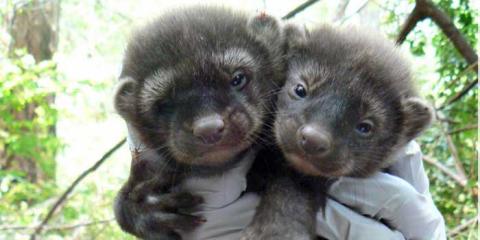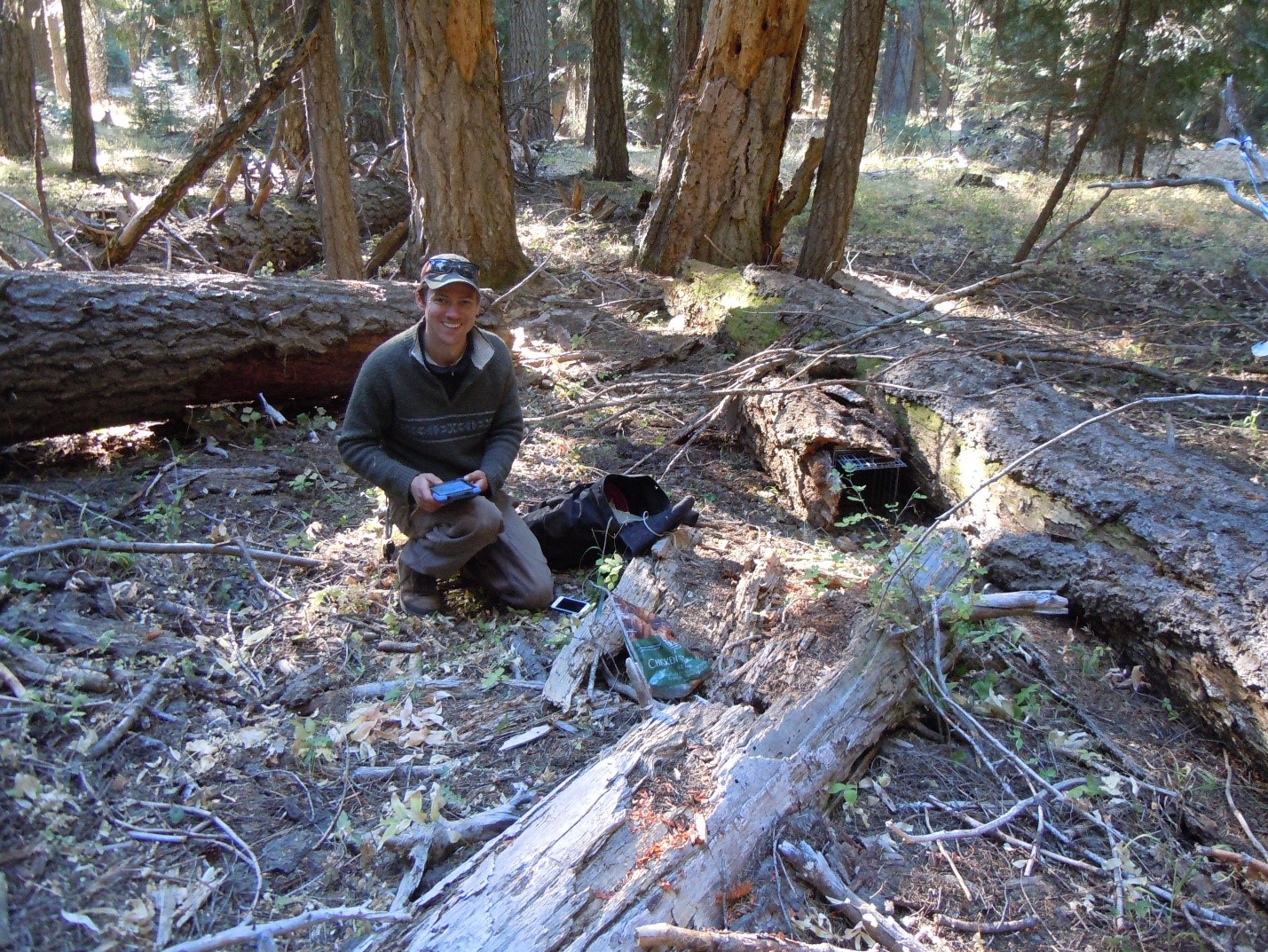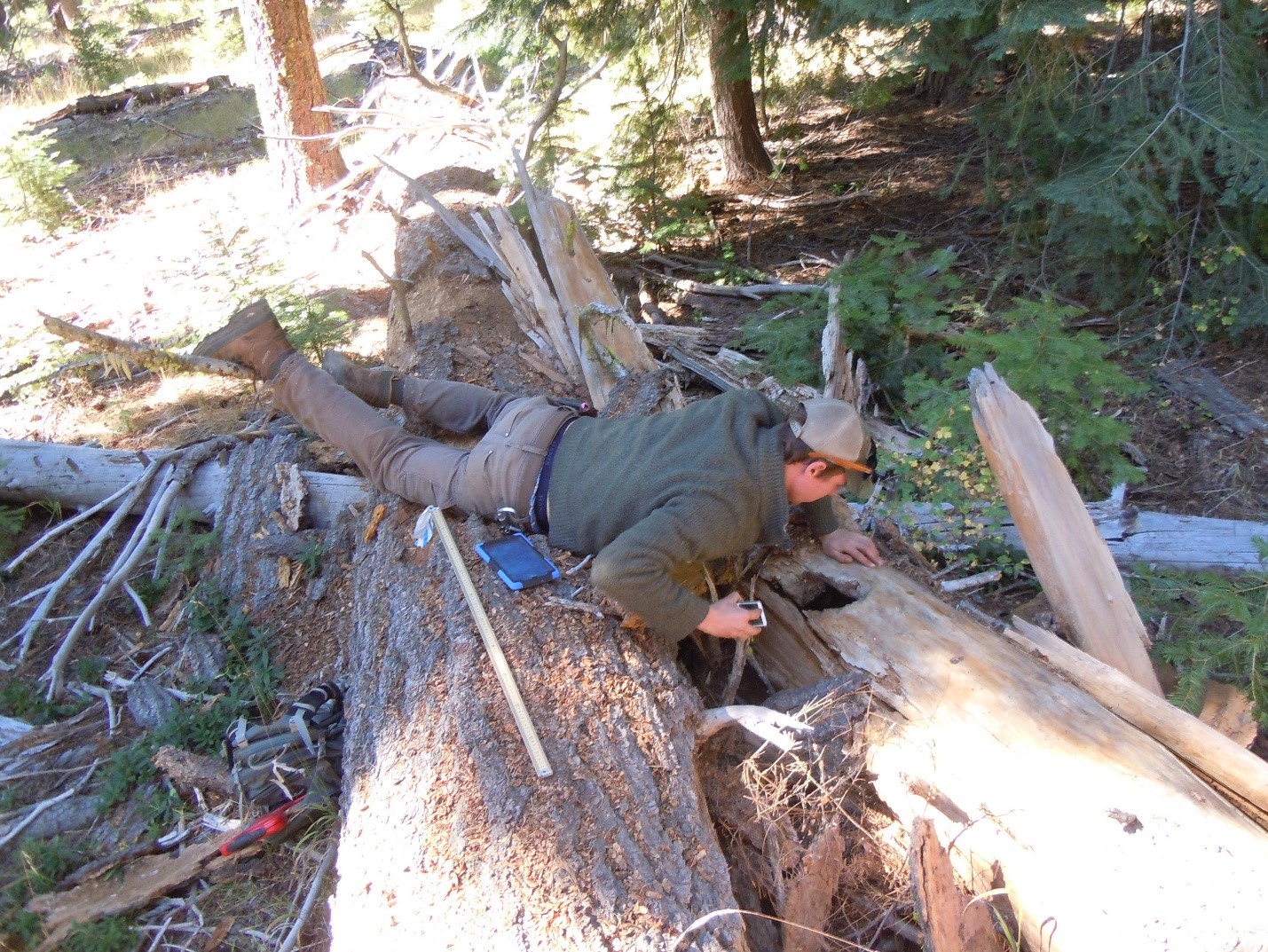In pursuit of fishers
June 17, 2019
I have always loved walking through the woods looking for wildlife. As a wildlife biologist, I get to do this a lot. Most of the time, I’m looking for northern spotted owls at night. But recently, I got to join Brent Barry, a research wildlife biologist with Oregon State University, to look for fishers – during the day!
Fishers are furry, forest-dwelling carnivores about the size of a housecat. A member of the weasel family, fishers are only found in North America. A small population lives in southern Oregon forests, although they once roamed across a larger part of the state, and Brent is involved in a fisher monitoring project located on the Klamath Plateau. Our goal was to check the traps he’d set, document known fisher den sites and retrieve the motion-sensing cameras that snap a photo whenever wildlife passes nearby. I had never seen a fisher in the wild, so I was supremely excited about the day.

In the photo above, you can see the live trap where we were hoping to find a fisher. Bait is used, and it smells terrible. Worse is a special scent that attracts fishers (and sometimes skunks, I’m told), but it is so strong that it’s usually stored in the bed of a pickup truck. It’s really gross.
After we finished checking the traps and none had fishers in them, I tried not to be too disappointed that we didn’t catch anything. We then met the rest of the crew and went to document known fisher resting and denning sites. This is important to document so we can begin to learn about fisher habitat needs. I work with many landowners who manage forests within the range where fishers live, and they want to know how best to provide fisher habitat on their forestland.
While out in the field with Brent and his team, I learned that fishers need multiple denning and rest sites within their home range. We found the site shown in the photo below and took all sorts of measurements to add this site to the collective database biologists are building about fishers. This den site had fallen over, as older standing dead trees, or “snags,” are prone to do. But it could still be used on the ground by a lot of different species, including fishers.

Next, we removed all the motion-sensing cameras that had been up all season. Biologists have gained a lot of information about fishers through these cameras. This includes their habits, the predators that eat them and even how they move their young. Forest managers and landowners can use this information to help provide the critical features fishers need on the landscape to survive.
I learned a lot spending the day with Brent, and I hope I get to go again! Since this field day, I’ve helped OFRI develop a publication, part of the Institute’s Wildlife in Managed Forests series, on fishers and Humboldt martens, a related species of forest carnivore. If this blog has piqued your interest in fishers, you can learn a lot more about these animals and ways to manage forests to provide habitat for them in this new publication. I invite you to download a copy here.
Fran Cafferata Coe
Cafferata Consulting
Oregon Forest Resources Institute contract wildlife biologist
